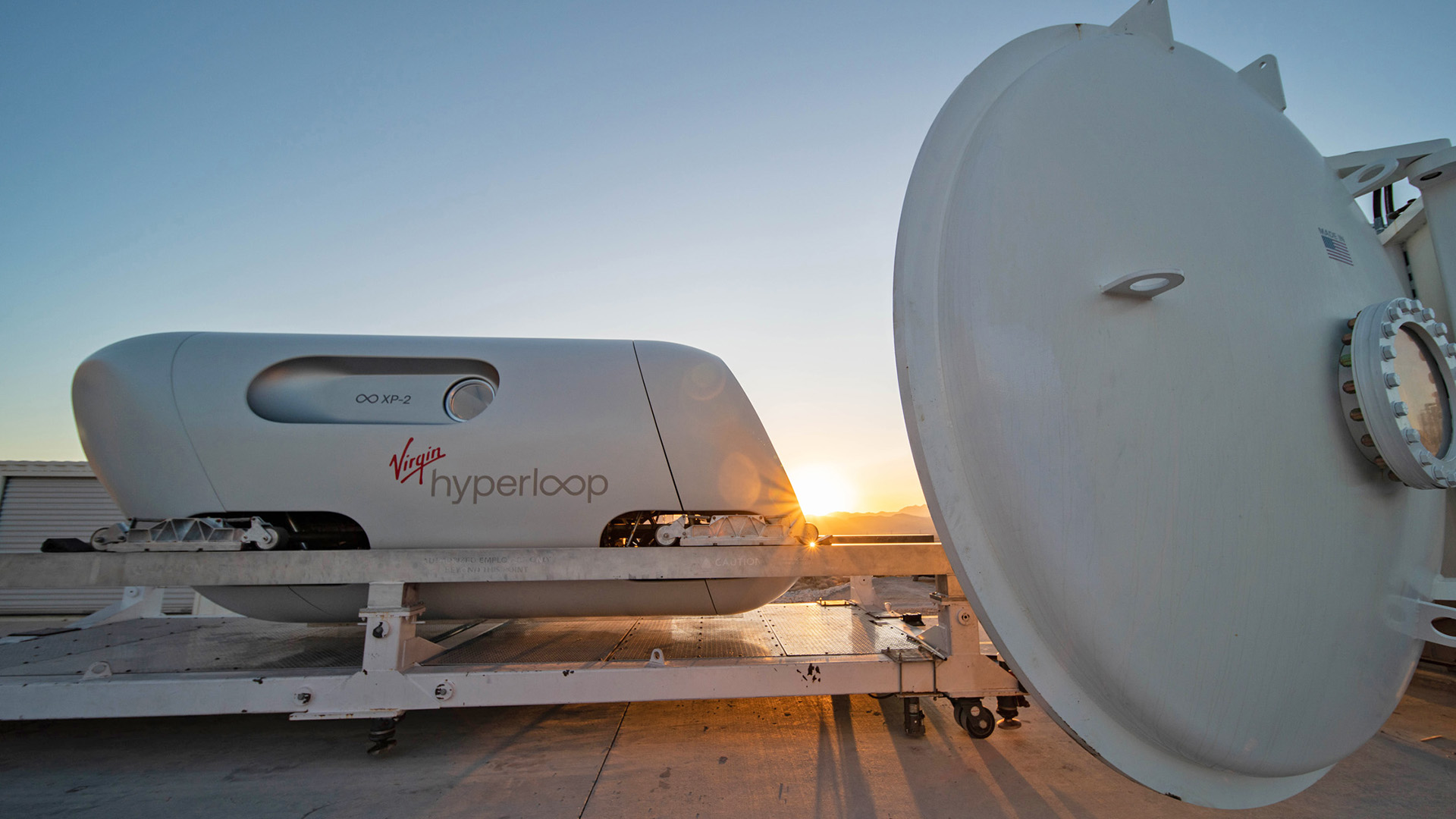

After starting out in a garage six years ago, Hyperloop One has since become Virgin Hyperloop and now recently sent its first-ever riders for a test in the company’s 0.31-mile DevLoop test site in Las Vegas, after performing over 400 empty tests. On such short distance, the freshly-unveiled XP-2 vehicle accelerated to 107 mph while carrying co-founder and CTO Josh Giegel and director of passenger experience Sara Luchian. Needless to say, this pace is far from the venture’s ultimate goal of moving 28-person pods at over 600 mph, but it’s a step in the right direction.
While the test appears to have gone as expected, it’s worth noting that there are many more steps to take to commercialize this ambitious transportation idea. Before connecting major cities through a hyperloop network, Virgin’s team needs to raise $500 million to establish a six-mile test facility in West Virginia, after which the system could be certified in 2025 or 2026. Mind you, U.S. President-elect Joe Biden recently announced that he wants to see zero-emission public transit for cities with over 100,000 people, which is a significant commitment towards a greener future that could just as well include a high-speed hyperloop system.
Historically, America isn’t big on passenger trains due to geographical, economical, and cultural reasons, yet the wild concept of a zero-emission trip from Los Angeles to San Fransisco in just 45 minutes has been fuelling its innovative minds ever since Elon Musk first talked about their Hyperloop concept in 2012. In fact, after SpaceX announced that it would build a test track to let its engineers develop the idea further in 2015, universities all over the globe got into the competition to prove the viability of this high-speed “vactrain” concept, which intends to eliminate the problem of friction and air resistance by using levitation or maglev proportion to send pods through a steel tube maintained at a partial vacuum.
If you think that’s complicated, just remember how Timothy Dalton’s James Bond sent General Georgi Koskov “to the West” in a human gas pipe canister in 1987’s The Living Daylights. It’s basically the same thing.

Designed by BIG, Bjarke Ingels Group and Kilo Design, the XP-2 is a custom-built prototype made for testing purposes only. As the proposed production vehicle is going to be much larger to seat up to 28 passengers, safety is what comes to mind while thinking of traveling at 600 mph in a low-pressure tube for an extended period of time.
To address that, Virgin Hyperloop called in an Independent Safety Assessor (ISA) Certifier for this live run. Safety-critical aspects like the control system that can detect off-nominal states and rapidly trigger appropriate emergency responses have now been validated. On the regulatory front, the future is also looking bright for this technology.











Last month, Virgin Hyperloop revealed West Virginia as the location for its Hyperloop Certification Center (HCC). In July 2020, the U.S. Department of Transportation (USDOT) Secretary Elaine Chao and the Non-Traditional and Emerging Transportation Technology (NETT) Council unveiled the guidance document on a clear regulatory framework for hyperloop in the United States. This provides a pathway for hyperloop regulation and deployment in the U.S. while also making it eligible for federal funding.
Such pioneering infrastructural projects can not succeed without governmental support, and like most things future-tech, everything should be taken with a grain of salt as there are still many more years, tests, and hurdles to jump through before you and I can take advantage of these kinds of technologies. Virgin, however, appears to be on the right track—for now.





Got a tip? Send us a note: tips@thedrive.com